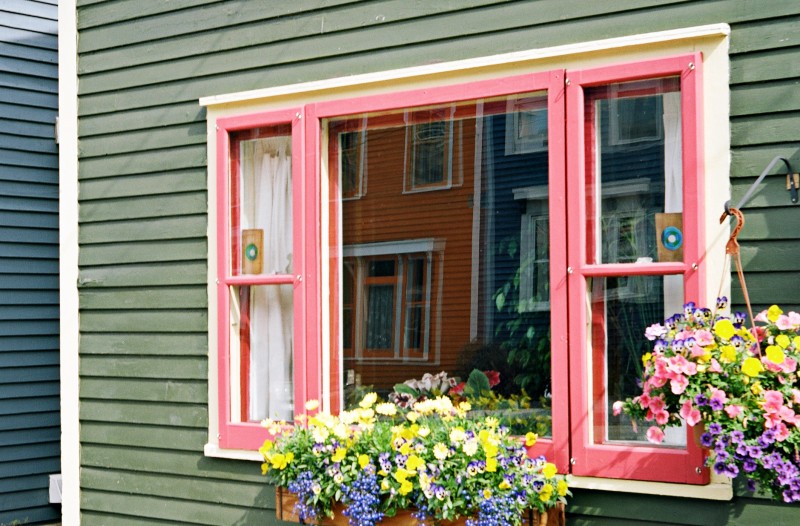We are often presented with classic, quaint, or colourful buildings that would make striking images – then we grind our teeth when we can’t use them because there is a power line, a curb full of parked cars, or a dumpster destroying an otherwise wonderful image. In these cases, one can often rescue the scene – and sometimes create a more powerful image – by focusing on details of the building, and extracting an abstract image derived more from shape, lines, and colours than the overall building and its surroundings. Sometimes, one can do both: create an overall, “postcard” view of the building and its setting, and then focus in to obtain “arty” images of architectural details or lines and shapes. For example, consider the following image extracted from a view of the Cape Bonavista light in eastern Newfoundland:
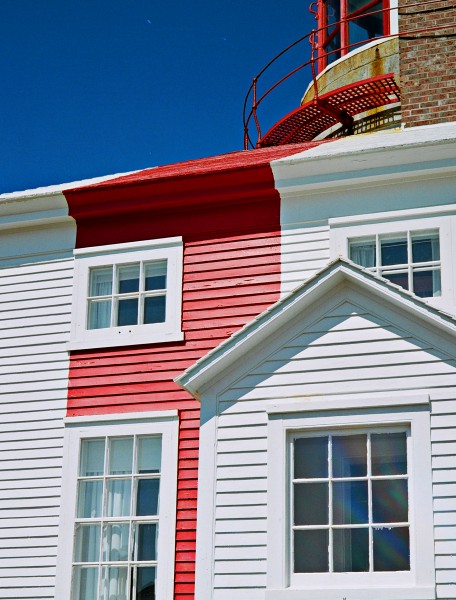
Detail, Cape Bonavista Lighthouse. Voigtlander Bessa, Kodak VP-160
The original image was pleasant but not dramatic:
Similarly, consider this image of the houses of Jelly Bean Row, the historic district of St. John’s, Newfoundland:
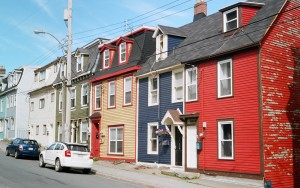
Jelly Beam Row. Note parked cars and power lines.
The line of parked cars precludes any artistic image, and the angle of the street makes it impossible to crop the cars out of the image. Consequently, the best option is to close in and take images of doors and flowerboxes, extracting pictures that are as well composed as possible and interesting for their lines and combinations of doors, trim, and flower boxes:
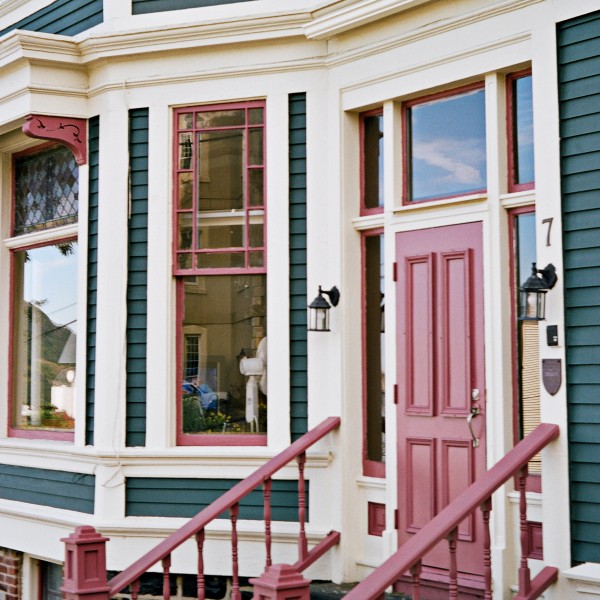
Jelly Bean Row 01, Voigtlander Bessa, Kodak VP-160
Here the violet rails lead the eye into the door and create a sense of movement in this otherwise static image. Even if they do not create an image that will necessarily win first place at an exhibit, colourful doors are always a an object that invites us in and makes us feel good, especially if combined with bright house colours:
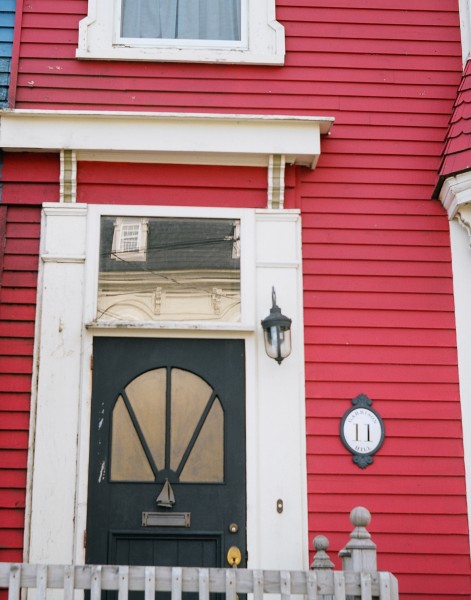
Jelly Bean Row 02, Voigtlander Bessa, Kodak VP-160
Windows with flower boxes are another attractive image, and can often be shot when there is considerable clutter, construction, and wiring outside the frame:
